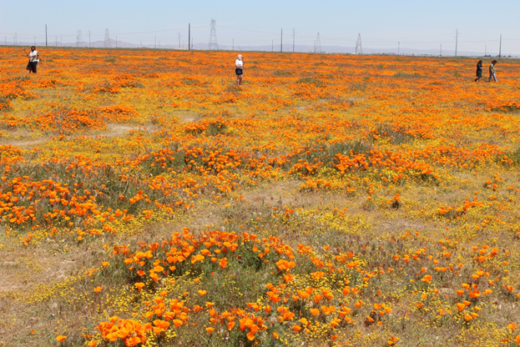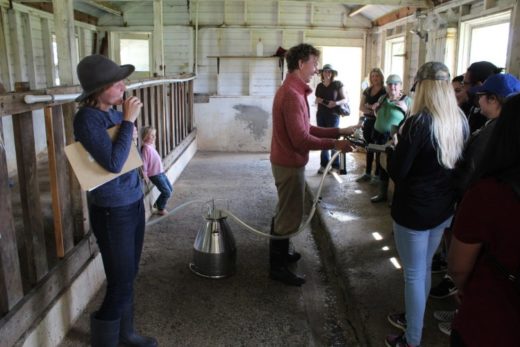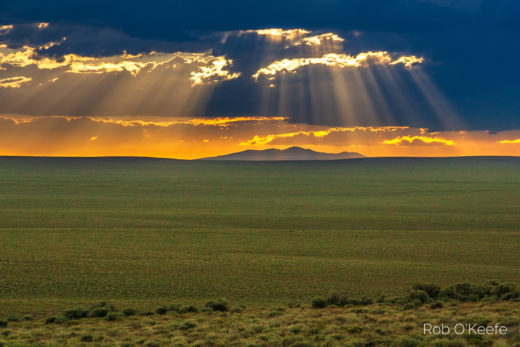In the spring of 2020, National Weather Service Senior Meteorologist Todd Hall presented a statistical analysis of reliable weather records across southern California from the late 1800s and early 1900s to recent years. Todd shared a wealth of recorded weather data with educators at this college workshop. Though weather stations and observations must adhere to strict Weather Service standards, data sets are most reliable since WWII and weather stations have gone digital since the late 1990s. This is why, though they are regularly checked for accuracy, you may no longer see people out reading thermometers and measuring precipitation at these weather stations. Decades of observations by dedicated weather recorders have been augmented and now replaced with the precision and efficiency made possible by modern technologies at these official National Weather Service stations.
Todd Hall reminds us that he first gathered the recordings from the National Oceanic and Atmospheric Administration (NOAA) database. He emphasizes that local, state, and national (fiscal and human) priorities shift from time-to-time and this has an effect on available weather data. For instance, in this study, some stations were omitted because data was missing during World War I. Todd states, “While I do not know the exact reason, I am left to believe priorities may have shifted to fighting the war, rather than taking daily high-low temperatures. It could have been something occurring at the local level too. One observer had a life changing event (death, job promotion, etc.) and they were trying to locate a new one in the area.”
Here, we share selected data that Todd Hall has presented. Note that Pacific Gas and Electric and Southern California Edison are adding hundreds of new stations to help monitor threatening fire weather conditions at their utility sites. These utility companies are working with the National Weather Service to measure weather elements such as humidity and wind that will help fill in gaps to improve the science. Considering these additions, it is possible that there are now more weather sensors in California than at any similar region in the world.

The traditional stations have recorded remarkable variability in weather years and events during more than a century. They include record months such as February, 1998, when Newport Beach received more than 12 inches of rain and Santa Ana topped out at nearly 14 inches, thanks to strong El Nino-driven events. The 2.59 inches of rain in Death Valley in January 1995 broke their records. In September, 1939, a tropical system swept up over our deserts, delivering nearly 9 inches of rain to Indio and about 7 inches to Imperial and Needles. In contrast, many state and all southern California weather stations have recorded no rain during each calendar month, depending on the year, and that includes the middle of the rainy seasons. Some astonishing high and low extremes in temperature and precipitation are shown in the data, but these details have been smoothed into a running average that may show even more significant trends.

The long-term averages show a gradual downward trend in precipitation at nearly every station (Death Valley is a notable exception). It is the combination of gradually increasing temperatures that boost evapotranspiration rates and decreasing precipitation punctuated by wild variability each year that have fueled our fire seasons and cast doubt about how Californians are to cope with future floods, droughts, water shortages, and climate change. As an example, numerous California locations have recorded some their driest and wettest years during the last decade.

In addition to wild variations, all stations experienced noticeable warming since the late 1800s and early 1900s. Most of the stations experienced more warming of overnight lows than daytime high temperatures. Some of the largest cities with reliable records (such as L.A., San Diego, and Pasadena) have experienced some of the most dramatic warming. This might suggest that urban heat island effects are responsible for the warming since all of these cities have grown dramatically during the last century. However, locations that have not been urbanized or that are located along the immediate coast (where prevailing sea breezes dominate, delivering fresh ocean air masses) have also experienced significant warming. Five such stations have been chosen here to illustrate these trends, stations with somewhat less dramatic warming than the first two cities shown. The highs and lows for each year are displayed, along with a smoothed dotted curve that shows the average trends. It becomes clear that factors beyond urban heat island effects are driving much of the warming. There is abundant data ripe for cutting-edge scientific research.

This data seem to confirm what climate scientists have researched and discovered during the last few decades: Climate change in California resembles global trends. During the last several decades, gradual warming has progressed, punctuated by record-setting weather extremes, and these changes are having major impacts on the Golden State’s ecosystems, hydrology, economies (particularly primary industries), cultures, natural hazards, and water delivery systems.

As you examine these graphics that tell fascinating science stories, you can thank NOAA and the dedicated National Weather Service scientists, such as Senior Meteorologist Todd Hall. These are the people who get too little public acknowledgment and praise for preparing and distributing the daily forecasts that are eventually filtered into your various popular media. It is evident that these professionals are also dedicated to sharing the science that will help every Californian better understand our weather and our world. Thank you Todd and our NWS!



















(Source: Todd Hall, NOAA)

(Source: Todd Hall, NOAA)

One natural next step should be to compare these trends to northern California locations so that we can see if they hold true across the state. Finding data compiled from the Bay Area in two separate studies, we recognize a lot of similarities to southern California.


And this leads us to compare California data to the global trends that are likely to influence changes here. Climate scientists around the world continue to note that recent years have been the warmest on record and each of the recent decades has set a new record for warmest ten years.

You might check the following sources to investigate how climate change in California is powerfully connected to global trends.
Latest Global Update from NOAA. Here you will find some of the very latest verified temperature trends: https://www.ncdc.noaa.gov/sotc/global
An Astrophysicist and Science: https://www.geosociety.org//gsatoday/archive/22/1/article/i1052-5173-22-1-44.htm
IPCC: https://www.ipcc.ch/
WMO updates: https://public.wmo.int/en/resources/bulletin







